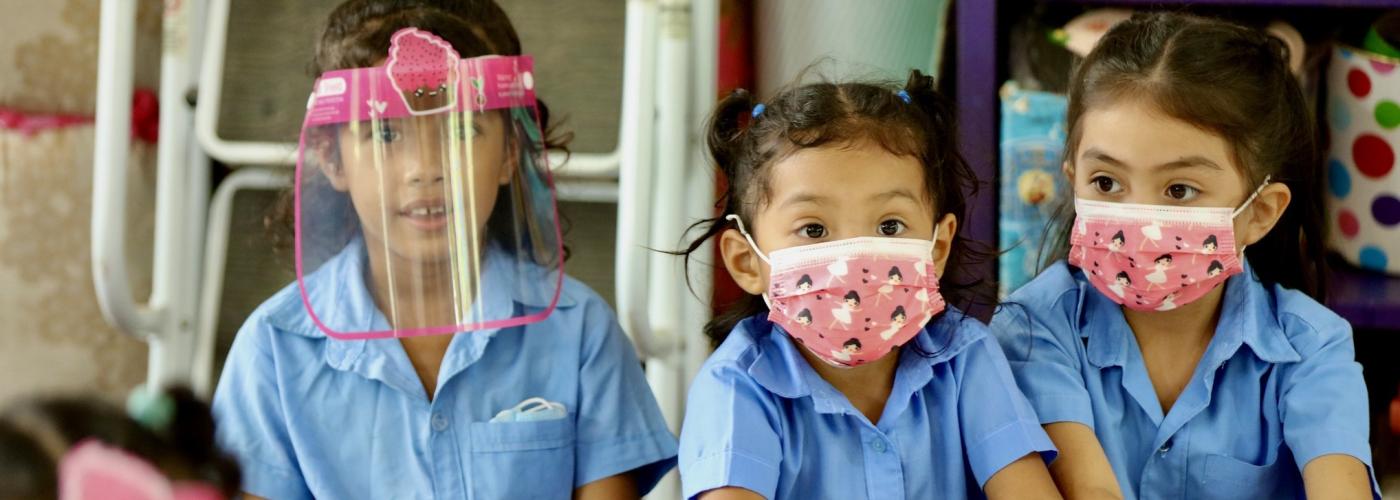Financing Childcare: Three Innovative Approaches to Expanding Childcare
Image

Almost every family in the world will need care services for someone in their household at some point in their lives—whether that is childcare, elder care, disability services, or help with household chores. Families must shoulder the cost of these care services, and without adequate resources and help, they often turn to low-quality or unsafe options, or rely on other family members for unpaid labor—labor that often falls to women and girls, which in turn limits their opportunities outside the household.
Finding new ways to finance care is crucial to creating high-quality, affordable options. Alternative financing can bring private sector innovations, knowledge, and resources to identify, pilot, and scale effective interventions. This week’s blog post on the Care Economy will spotlight three innovators, who are using alternative financing to expand and scale access to quality childcare.
1. Social Franchising Community Childcare Centers
Kidogo and Smartstart are two organizations expanding the network of micro-businesses that offer quality childcare through social franchising. Both Kidogo and Smartstart work with existing informal childcare providers on which many working women rely. In East Africa, Kidogo’s “mamapreneurs” operate childcare centers out of their homes. These 125 micro childcare centers cost parents less than $1 per day to provide affordable access to quality childcare. Through the Kidogo program, mamapreneurs learn skills to improve both the quality of care offered and management of their small businesses. Caregivers then use the skills they have learned and expand and operate their businesses more effectively. In South Africa, Smartstart offers a similar training program in which social franchisers called Smartstarters gain skills to improve care. Smartstart has assembled a variety of financiers, including governments, bilateral donors, foundations, and impact investors, who share the goal of scaling early childhood programs for young children and bring their unique expertise and resources to solving childcare challenges.
2. Social Impact Bonds in the Care Economy
Another strategy to mobilize additional funding and focus on quality outcomes is the use of social impact bonds (SIB), which involves an investor contributing the up-front capital. If the program meets certain predetermined targets, those investors receive a return from the government. In 2018, the first bond for early childhood development was piloted in South Africa, and brought an array of stakeholders together to expand access to home-based care services in the Western Cape. Predetermined targets focused on improving access and retention of participants and improving children’s learning. Early childhood impact bonds were also recently launched in Uzbekistan and Namibia. While SIBs present exciting opportunities to strategically focus on results, it is challenging and costly to set meaningful and appropriate targets and monitor performance without assigning too much risk to small, local organizations.
3. Public Investment in Innovative Childcare Models
A variety of tools can help governments invest in the care economy, and innovative approaches can help meet needs in ‘hard to reach’ areas. Subsidy programs enable governments to help families who would not otherwise be able to afford care. In Mexico, for example, the government had already invested in expanding formal childcare centers for older children, but many families were still left without an affordable option. In 2007, they launched a program that provided grants to establish community or home-based care centers, and income-based subsidies to cover up to 90 percent of participants’ costs. Colombia offers a similar subsidy program called Hogares Communitarios de Bienestar, which allows younger children to attend community-based care programs or utilize home-based visiting programs. Other strategies include direct and conditional cash transfers, which offer parents more choice in care options. Public investment expands both the options for care and the client pool.
Without greater public and private investment in the care economy, it will be difficult to scale solutions for families in need of childcare. Innovative strategies to mobilize financing and make existing financing more effective can help address these global challenges, but public sector leadership is critical to ensuring families have access to safe and high-quality care, as well as care workers being protected and supported. The COVID-19 pandemic has refocused attention on care services and presents a unique opportunity for public officials, policymakers, donors, investors, and entrepreneurs to expedite their efforts to reshape and reimagine care services.
This post is authored by Caitlin Hurley, Senior Adviser for Education Finance, Zemitek LLC Contractor in the Center for Education, USAID Development, Democracy, and Innovation (DDI) Bureau and Sonali Master, Virtual Student Federal Service Intern, Economics and International Affairs Major at Georgia Institute of Technology.

